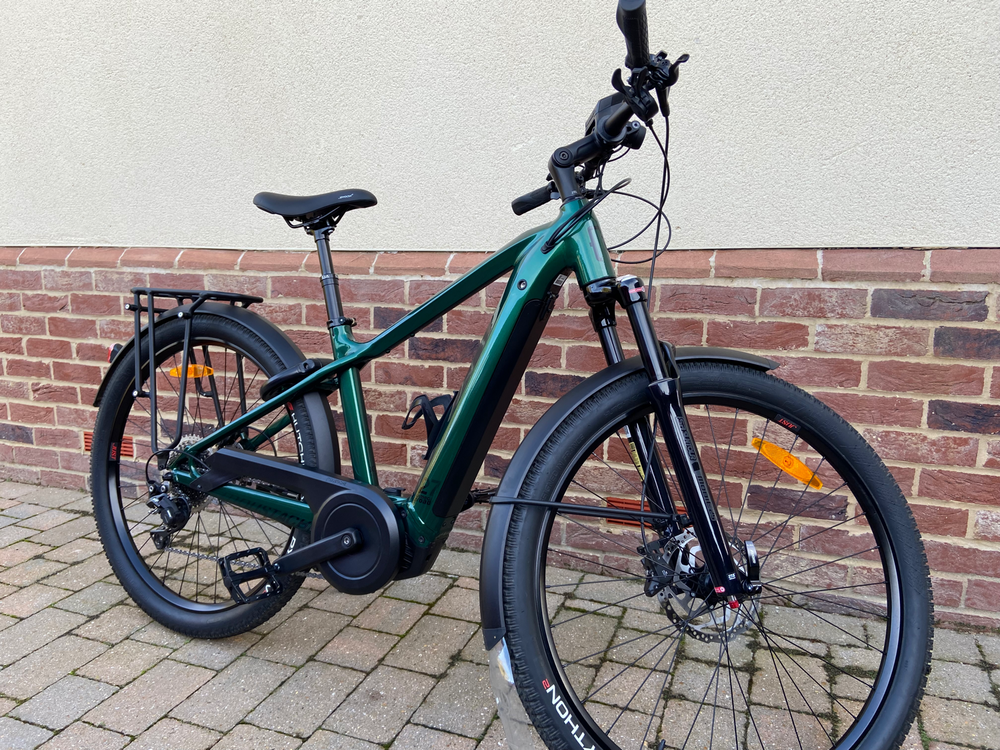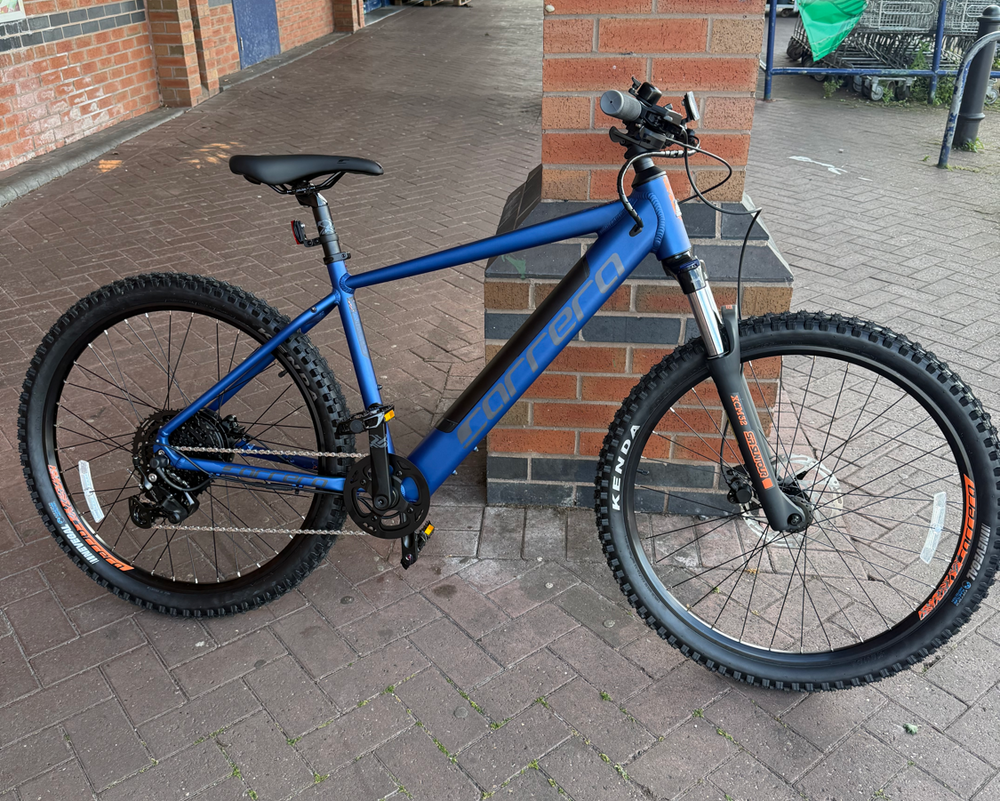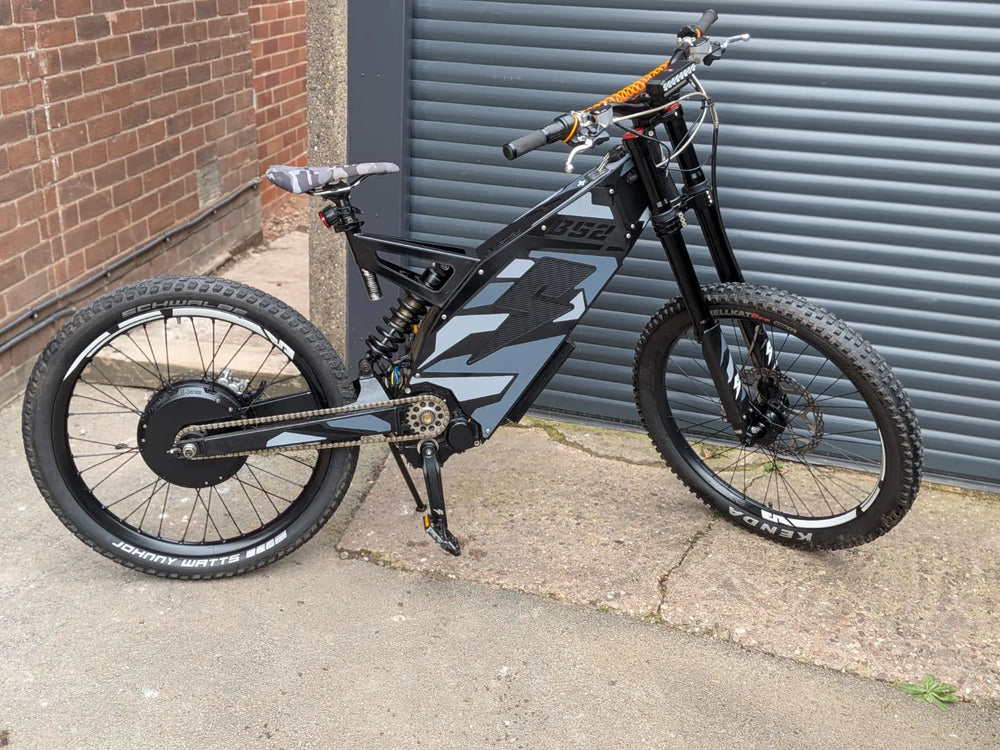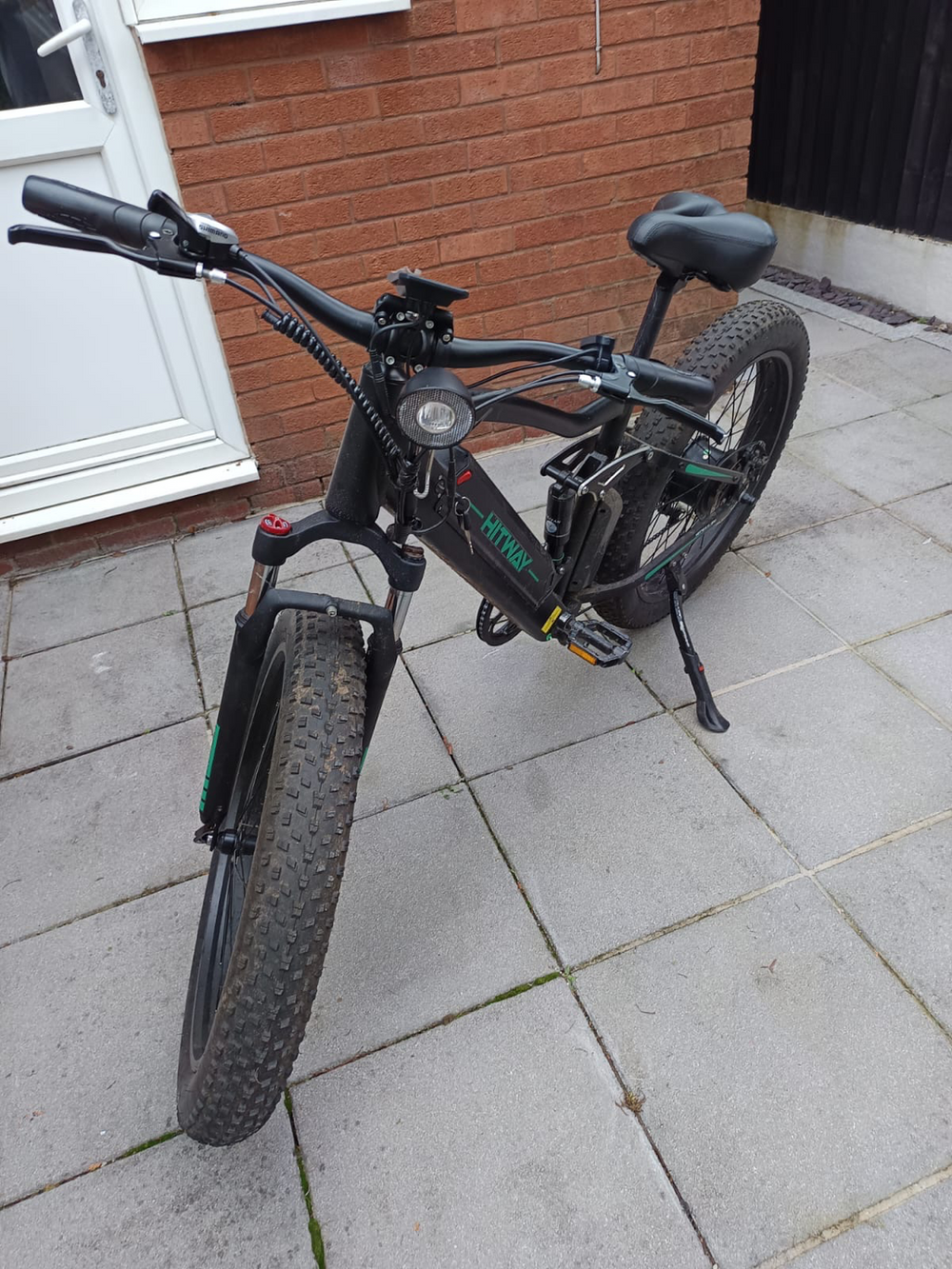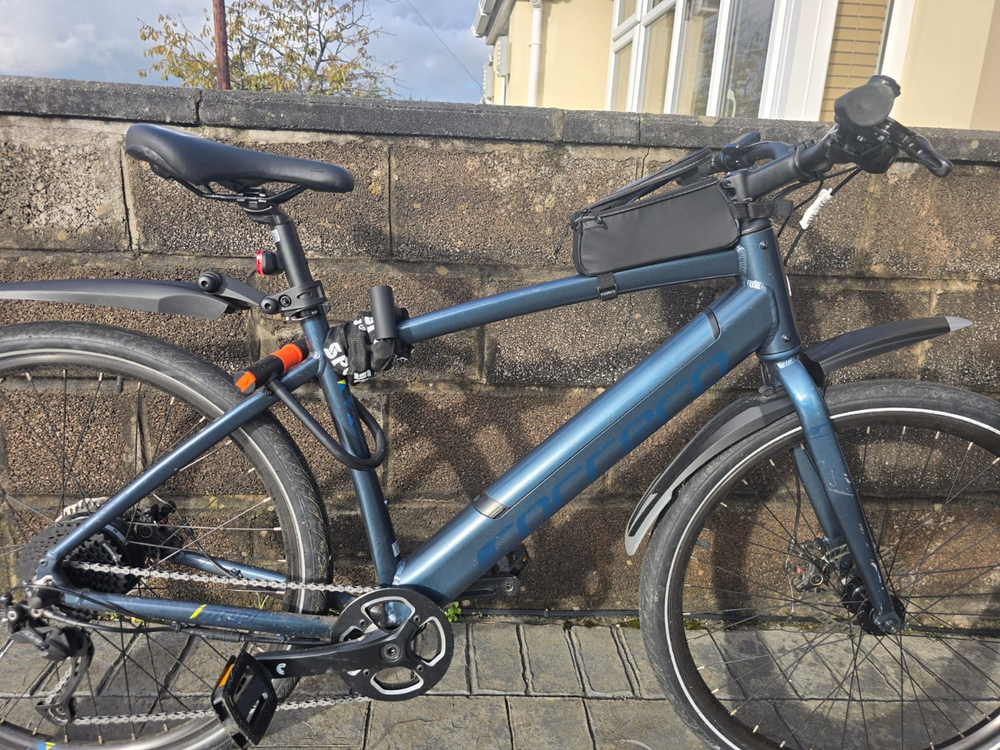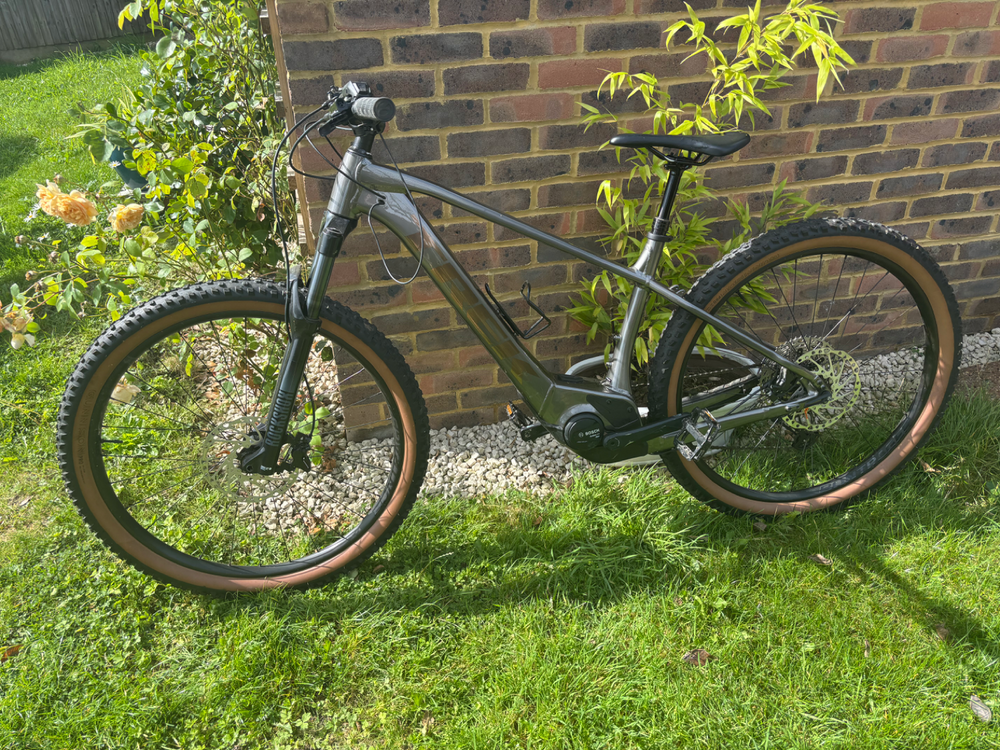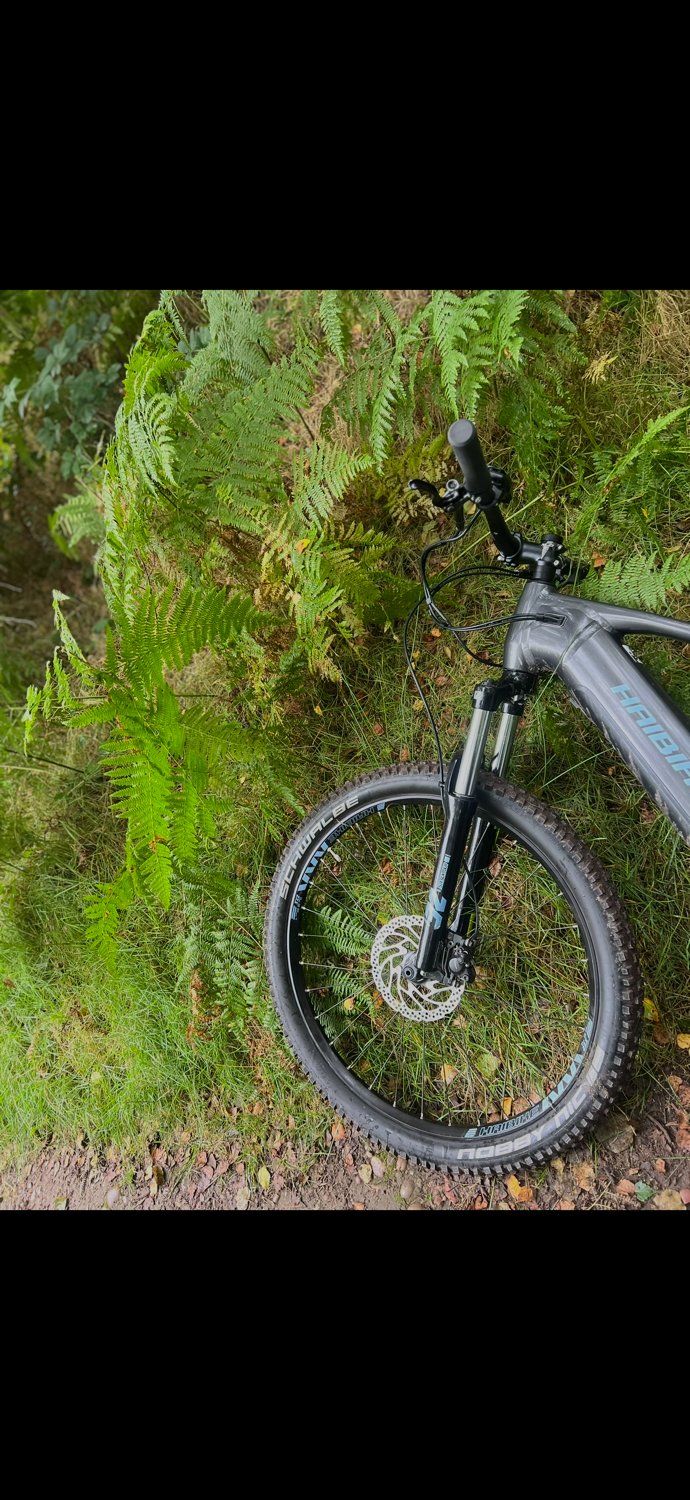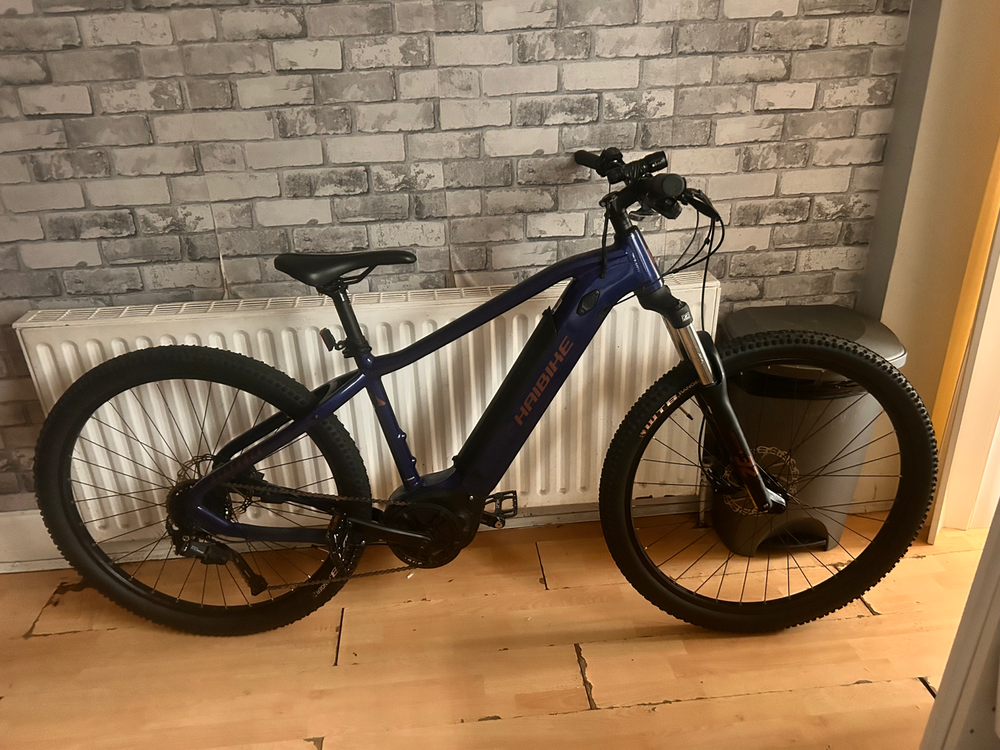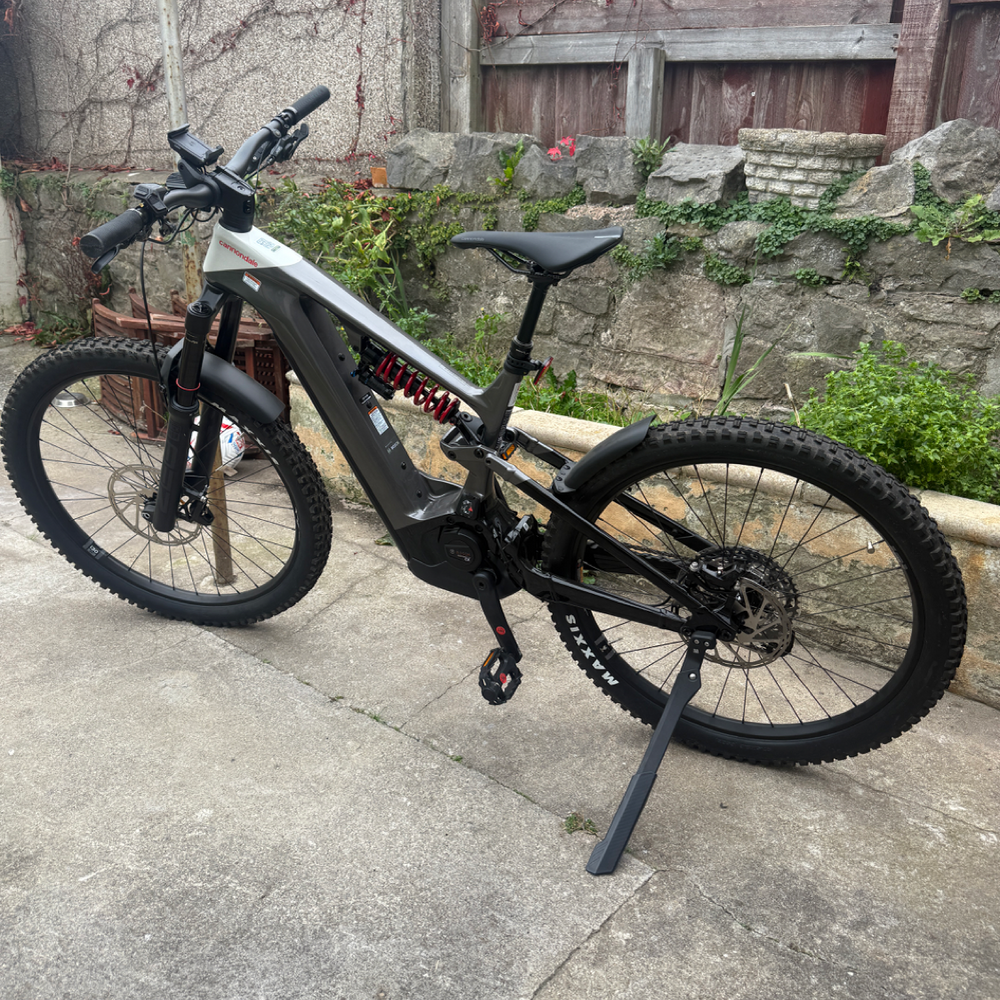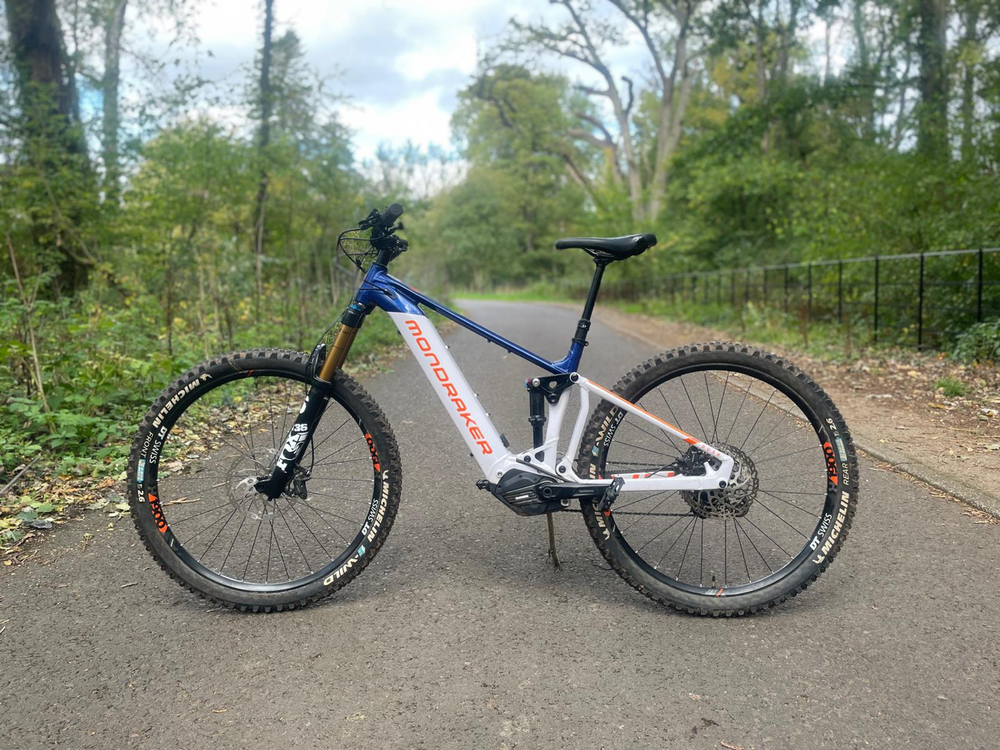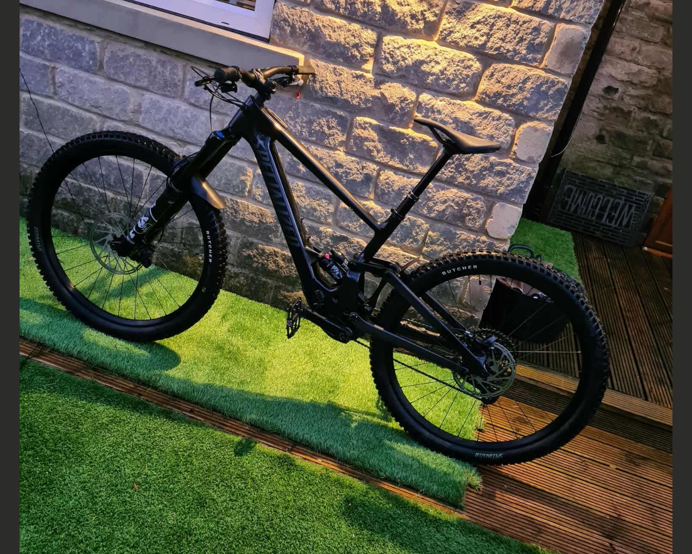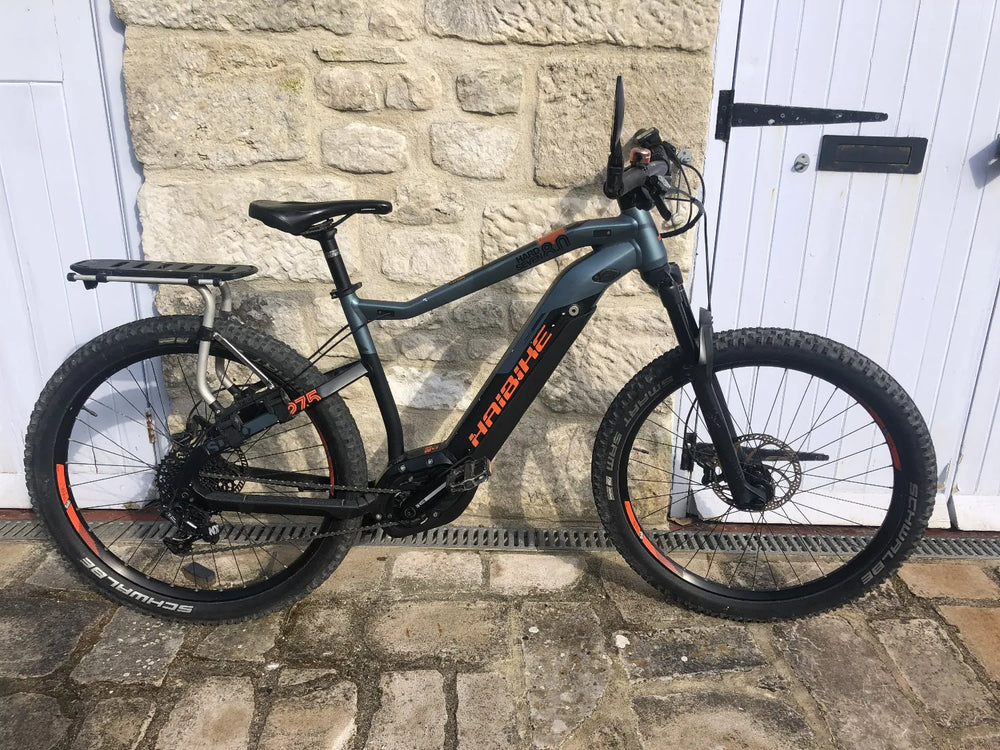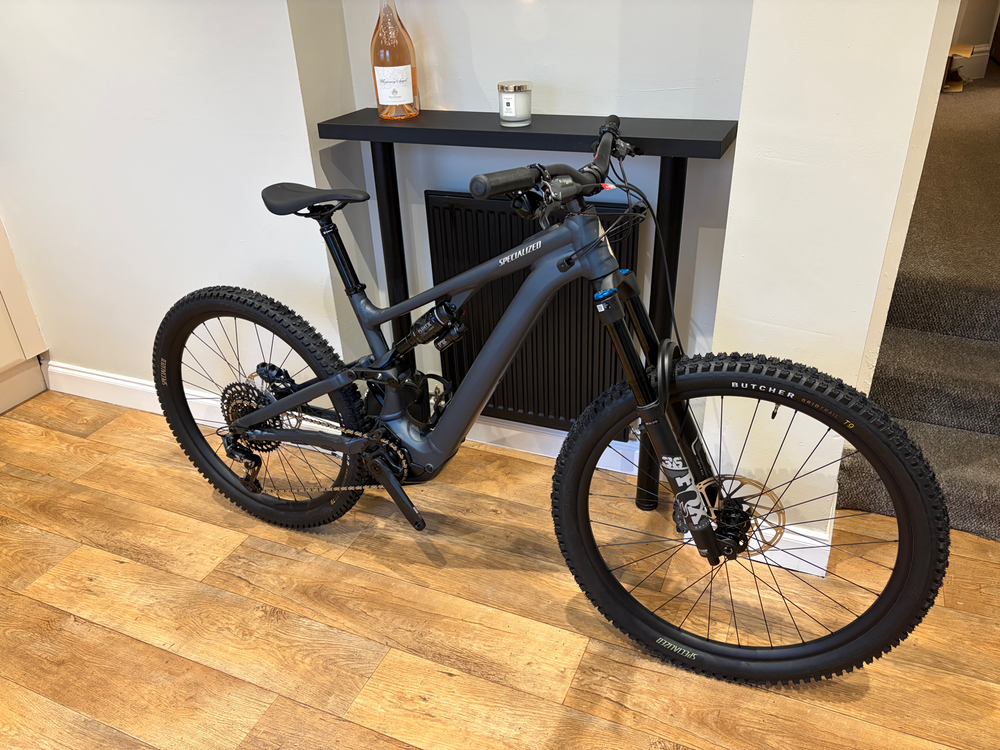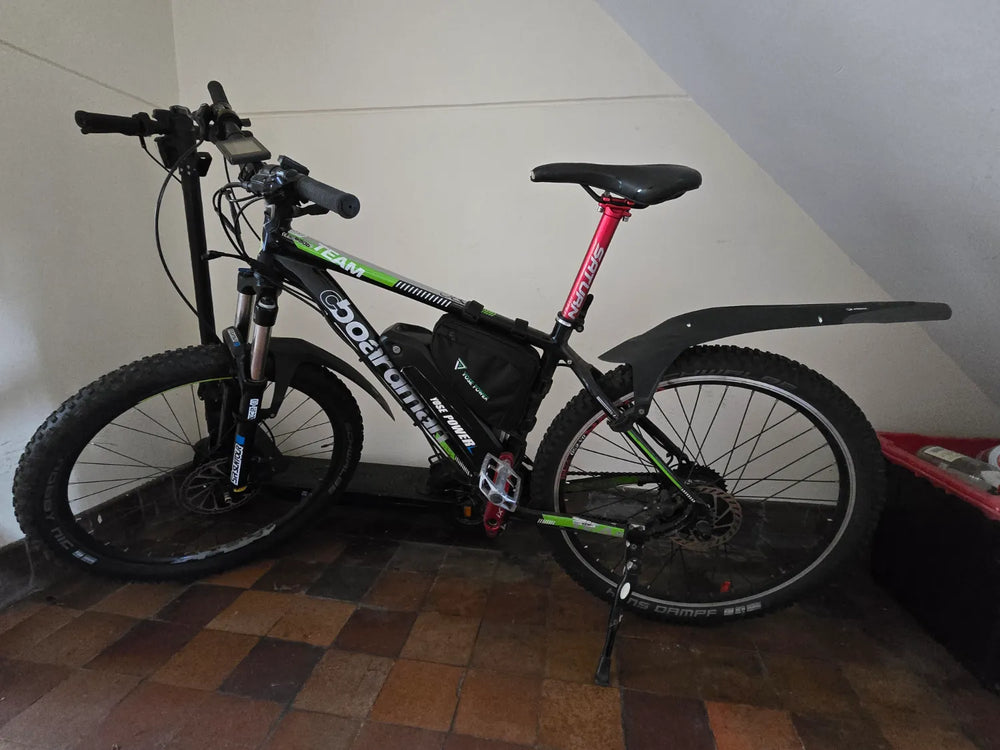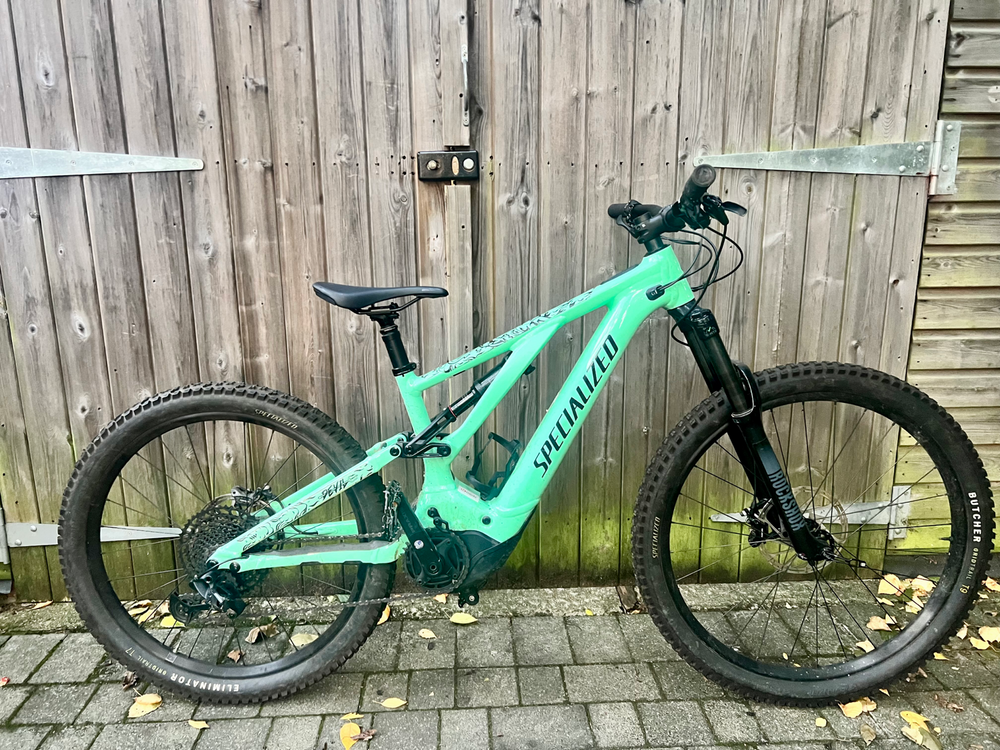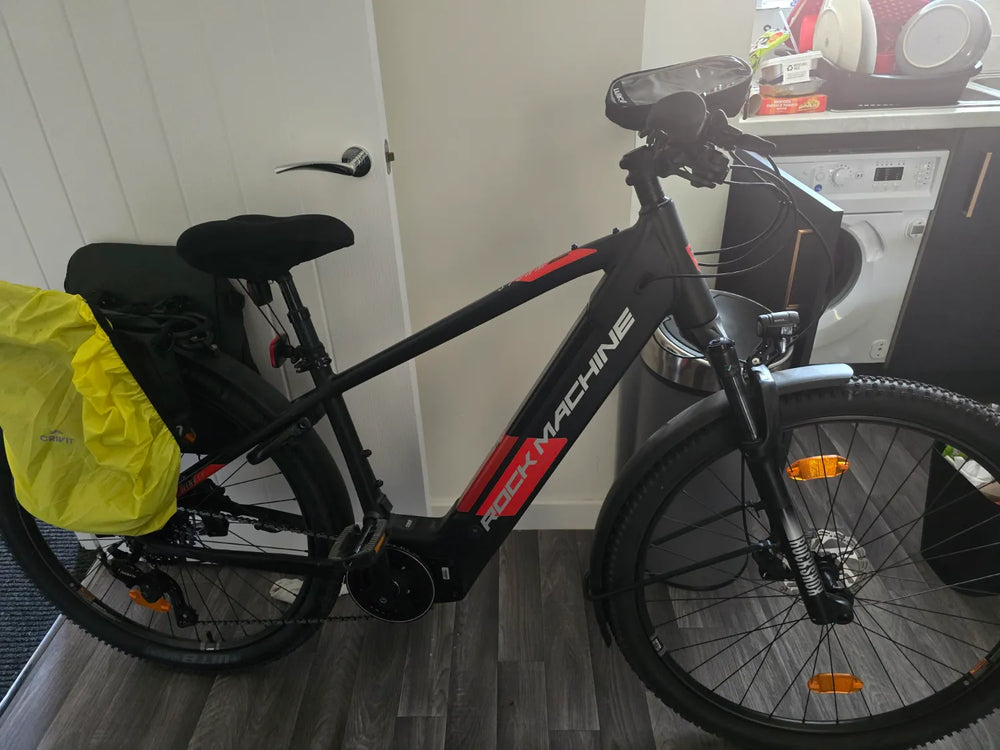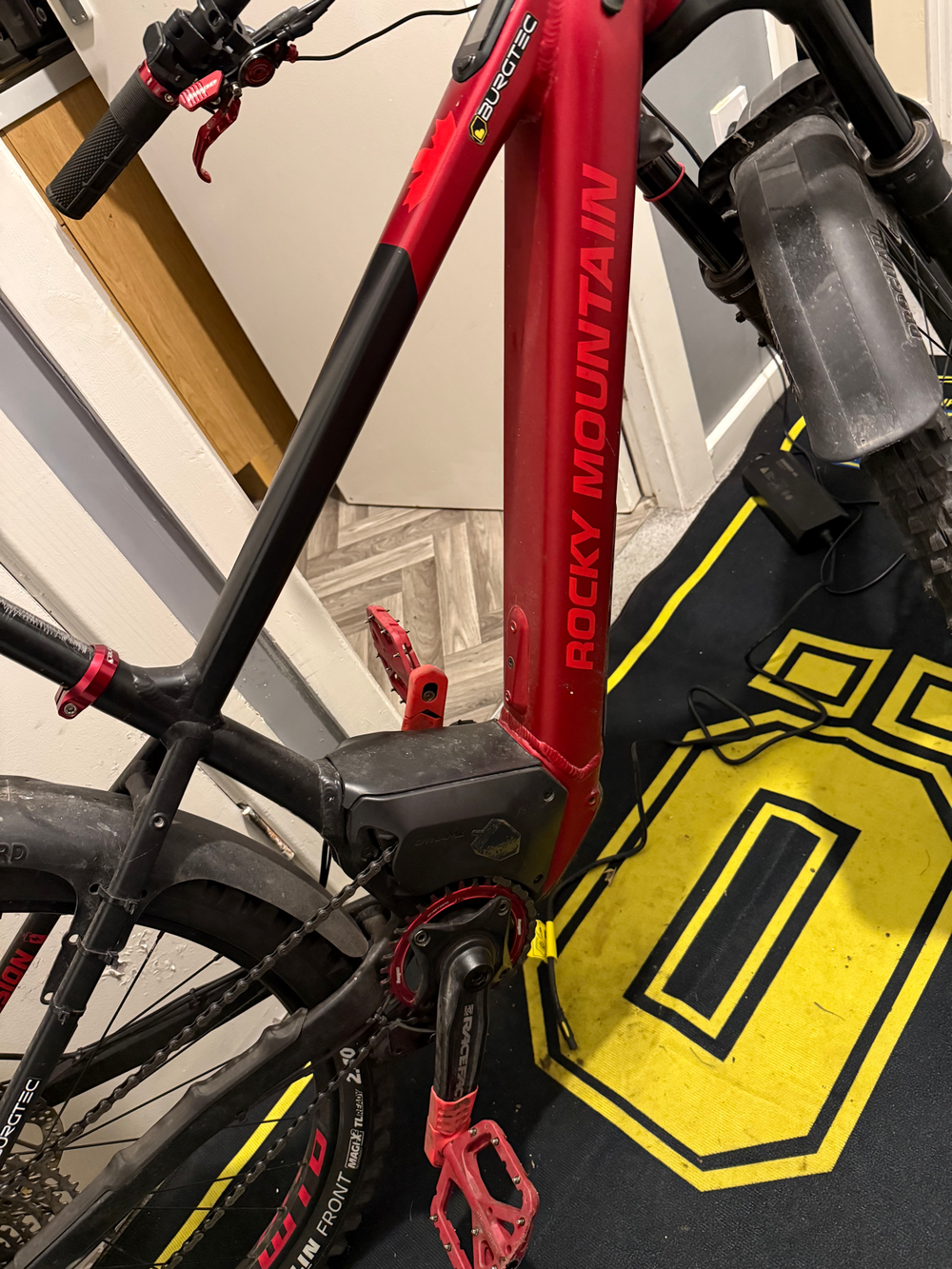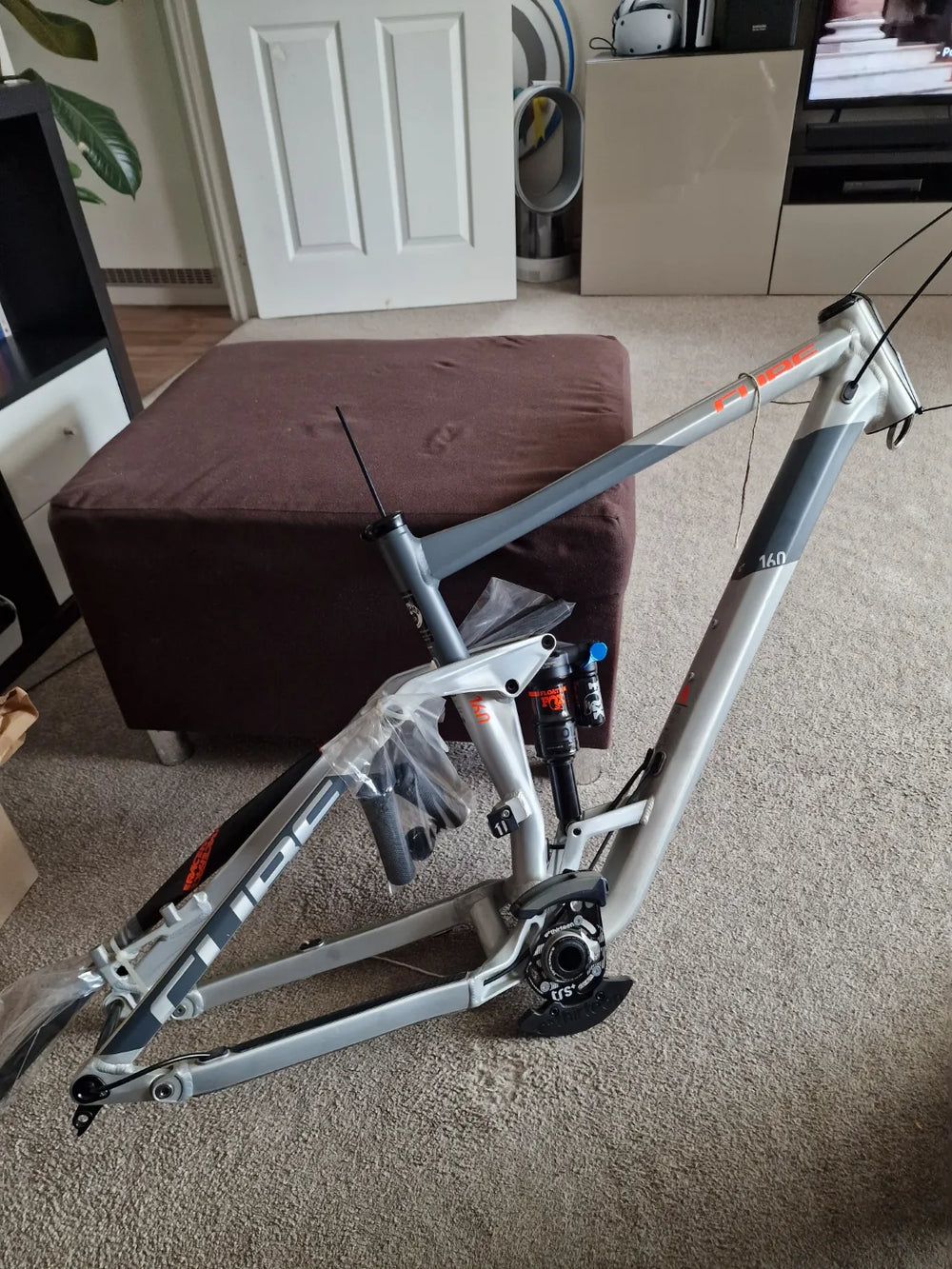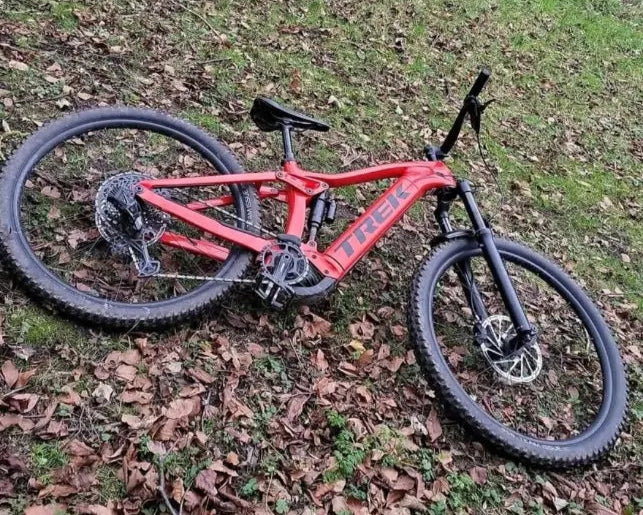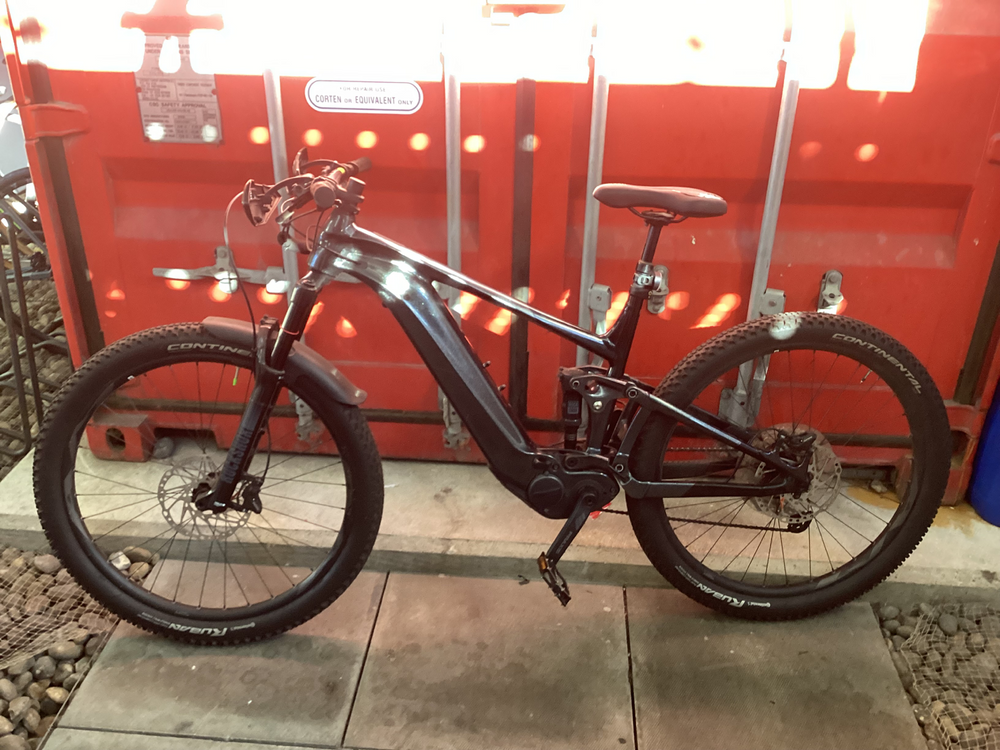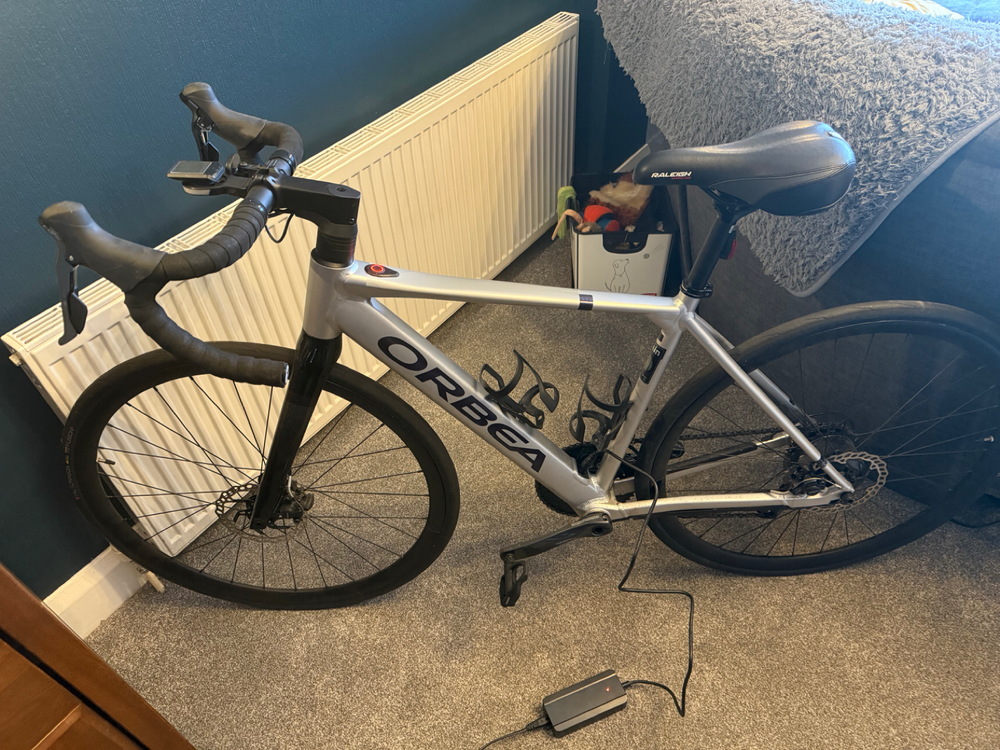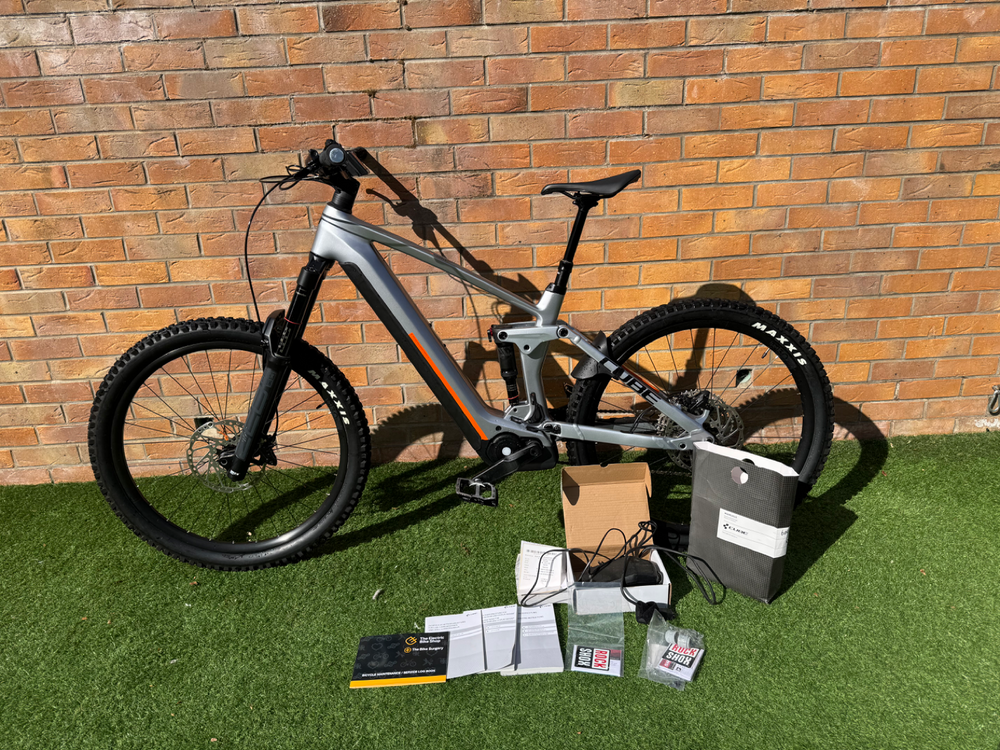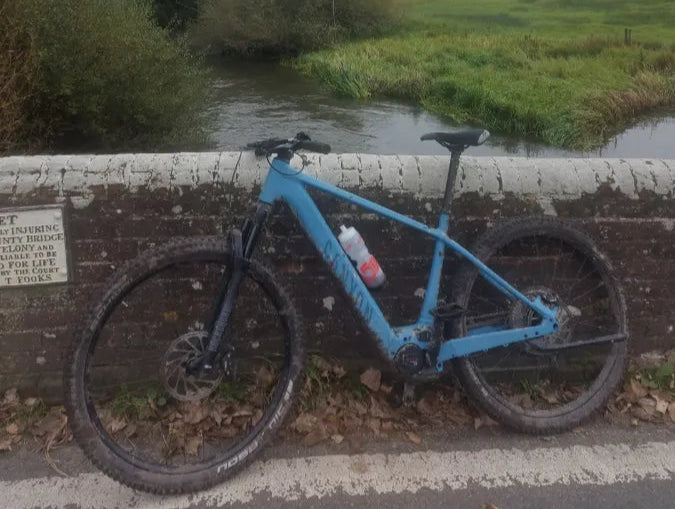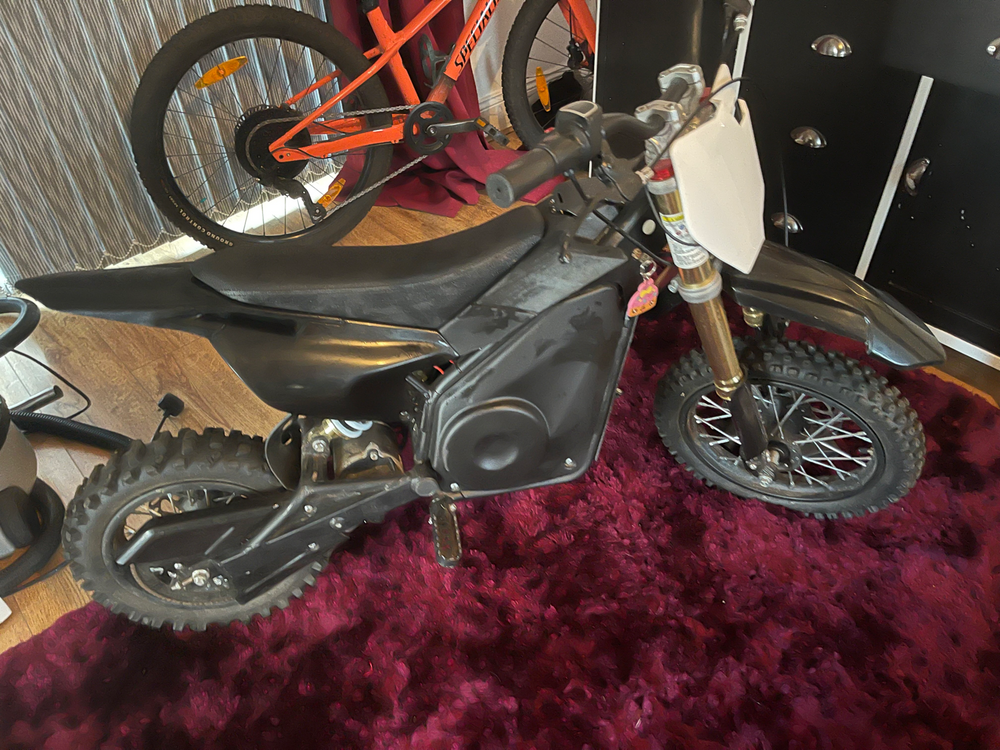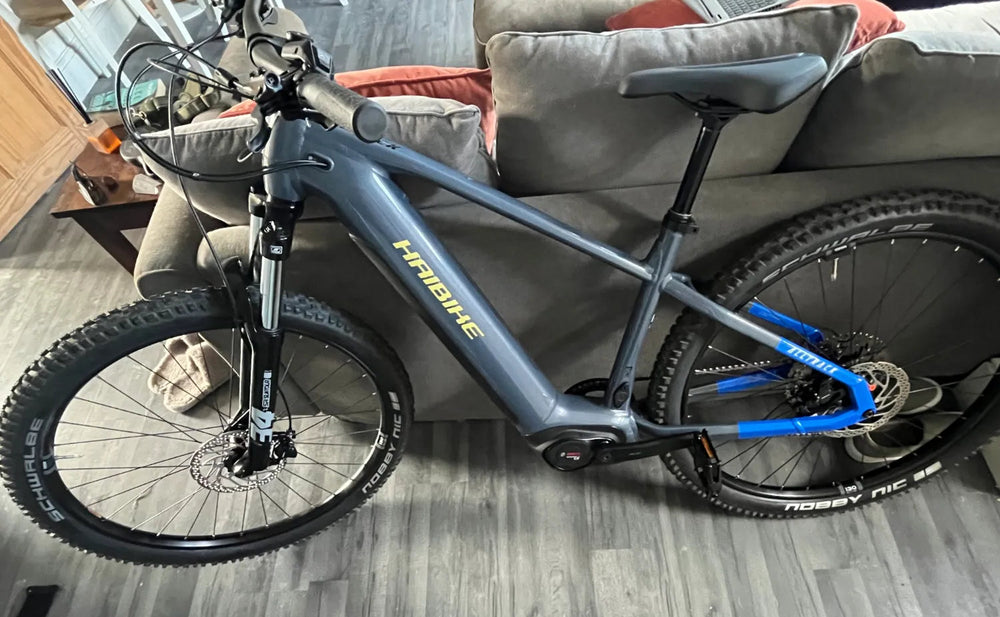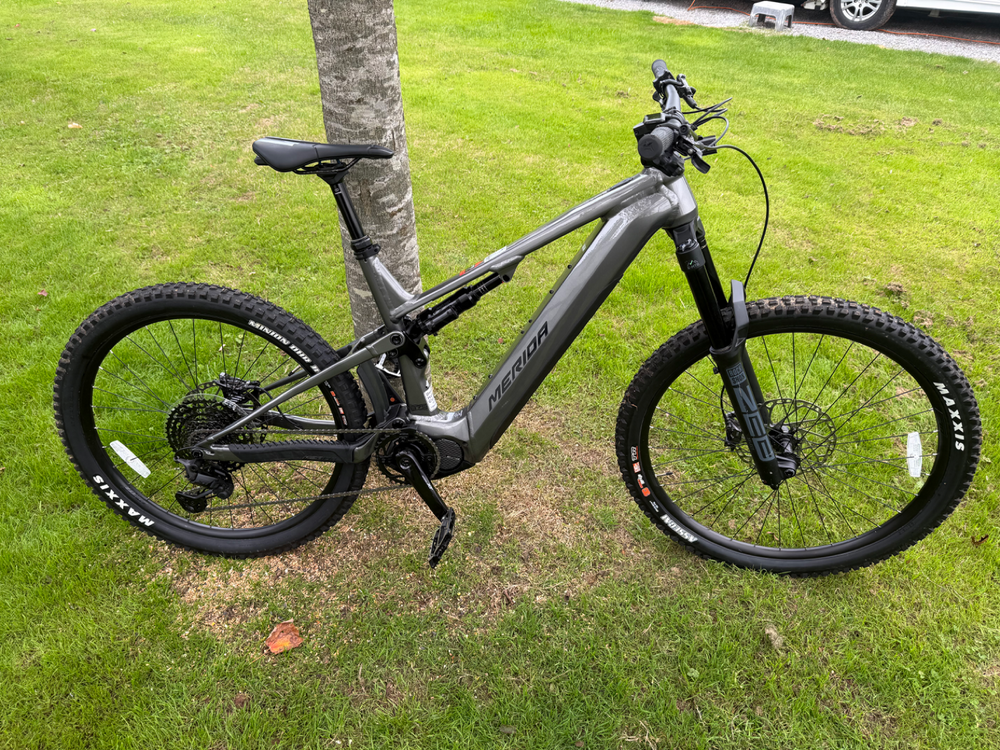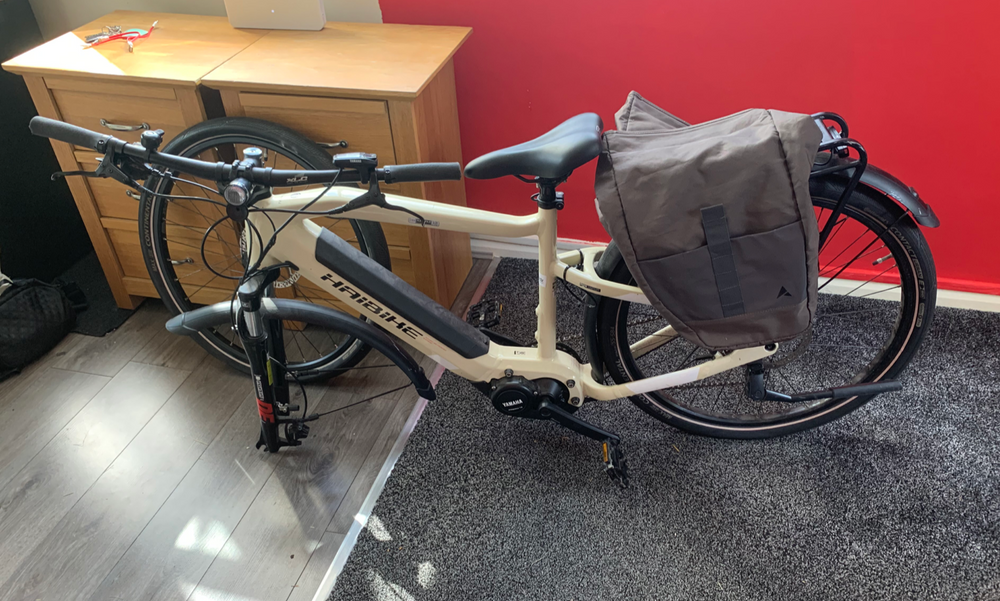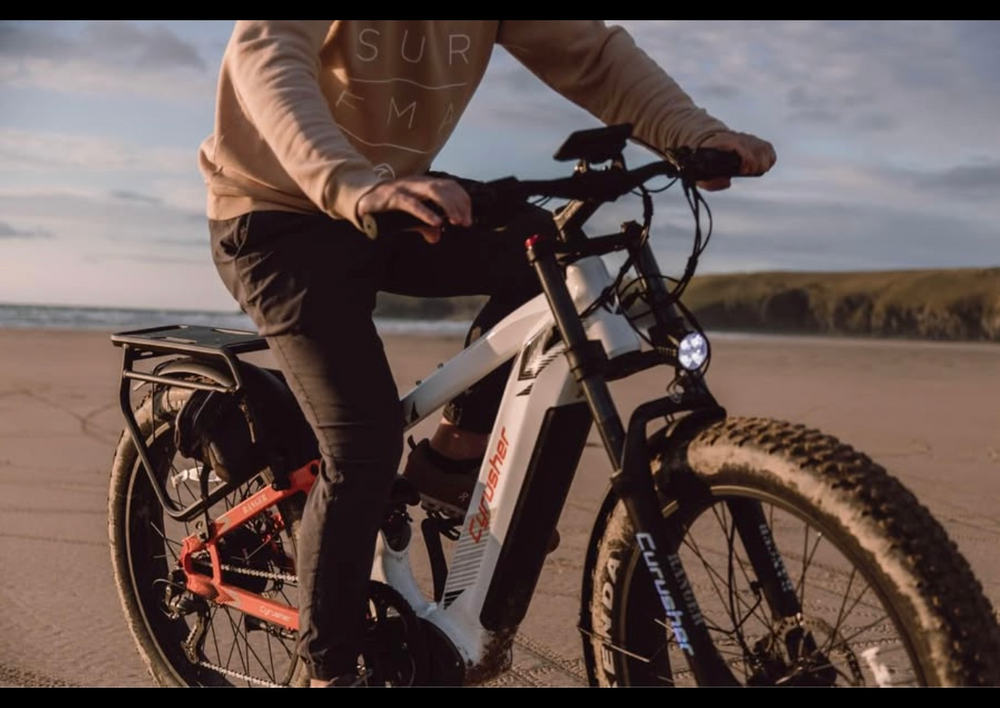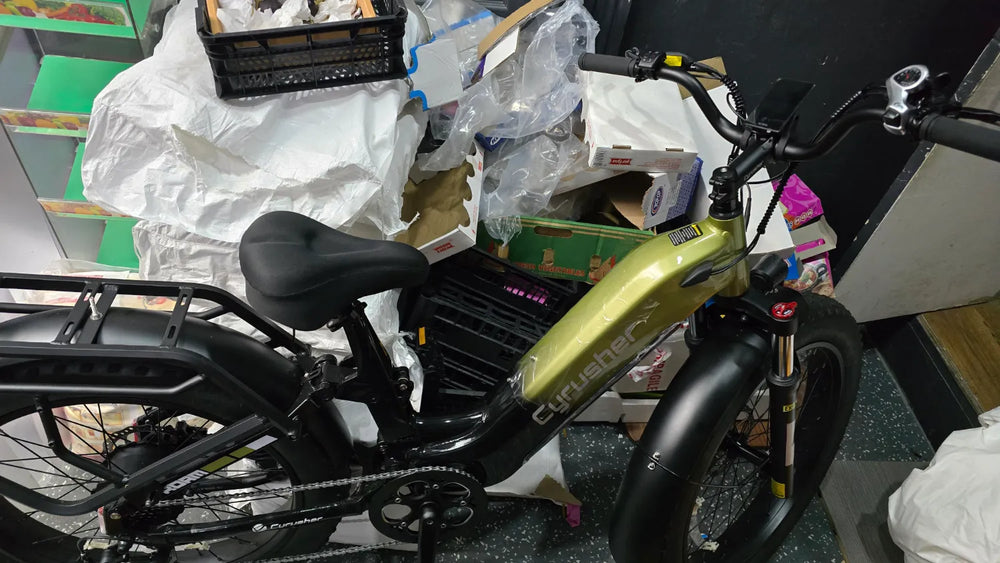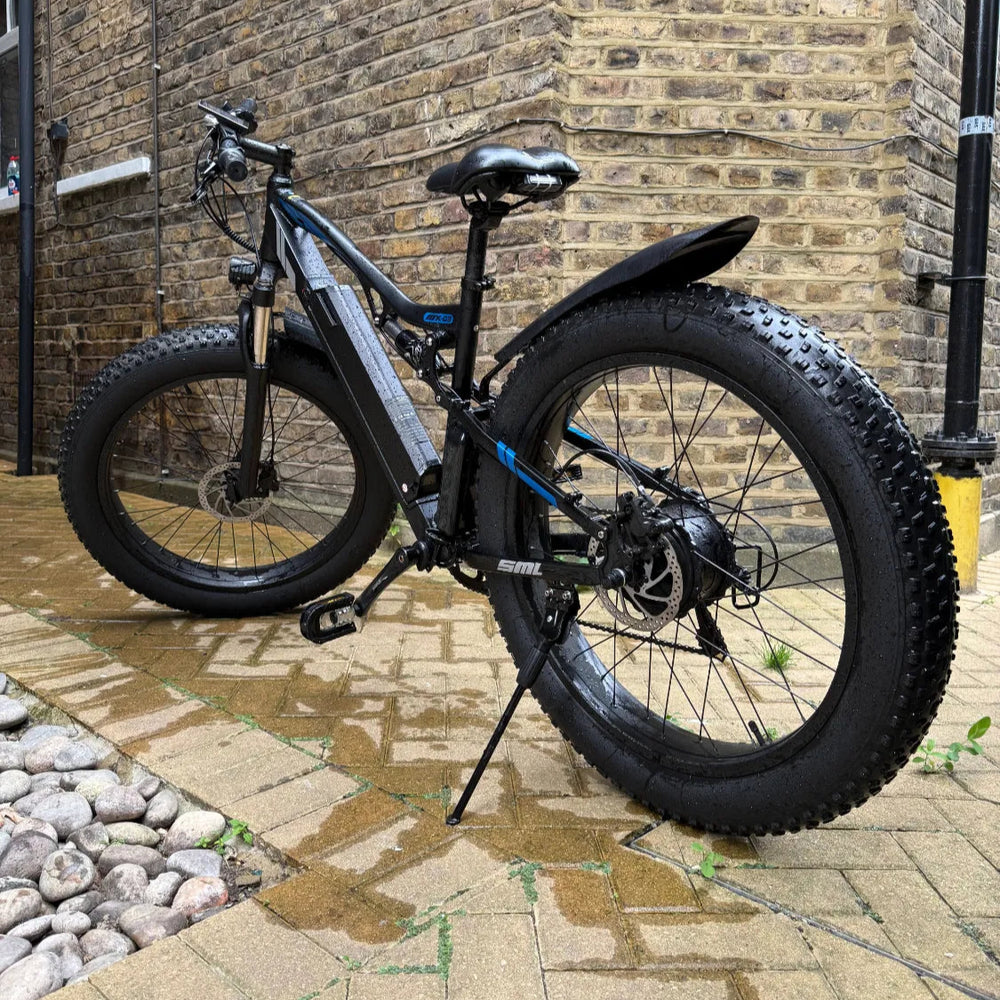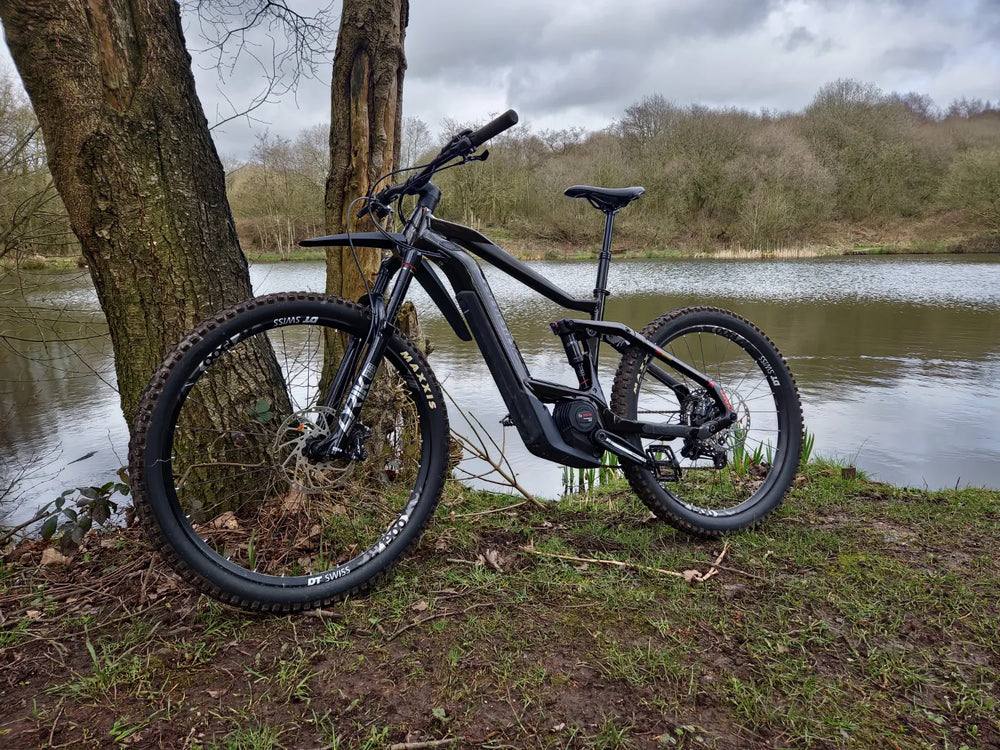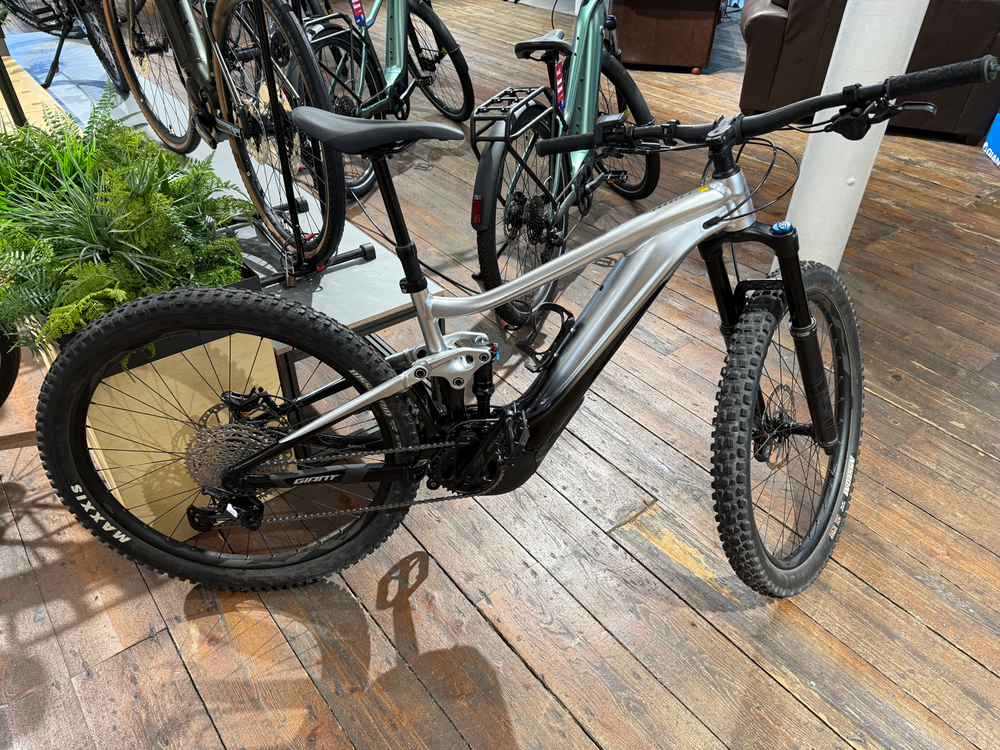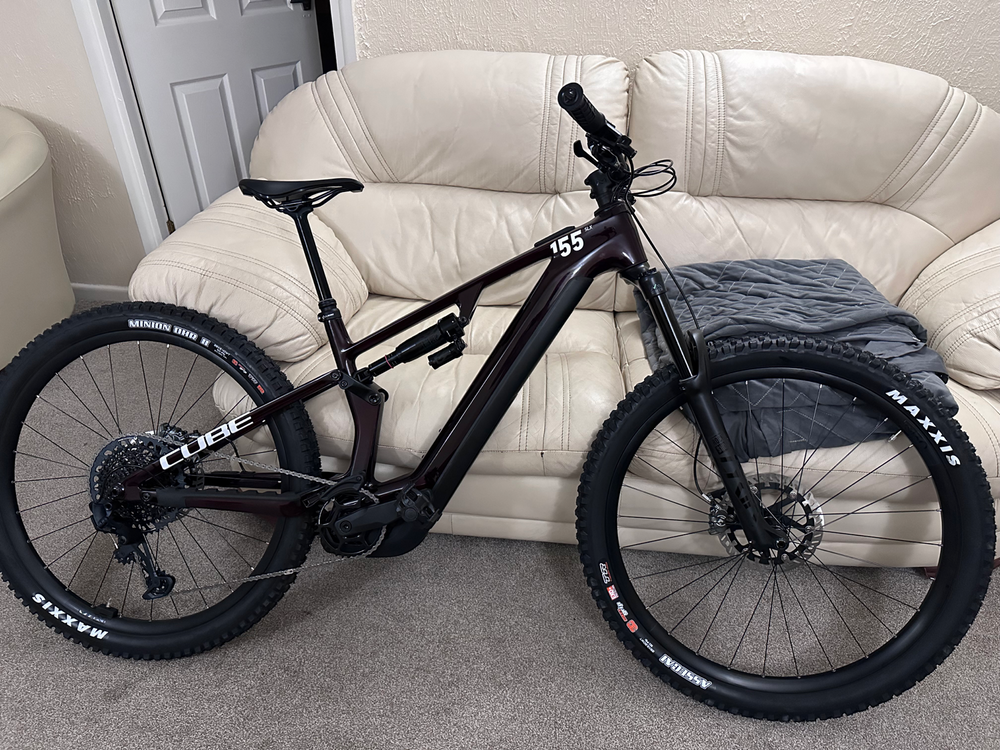Electric Mountain Bikes
Want to explore the most rugged terrain with some little assistance on hills and longer rides? Choose from our range of second hand electric mountain bikes.
Filter by
Filter by
-
-
L/XLDeore - FSA2023Cannondale Trail Neo 1Regular price £2,800.00Sale price £2,800.00Regular price
£4,300.00 -
LDeore - FSA2021Trek Powerfly FS 4Regular price £3,000.00Sale price £3,000.00Regular price
£3,587.00 -
MSLX - Praxis2023Giant Trance X Advanced - E+ Elite 2Regular price £2,880.00Sale price £2,880.00Regular price
£5,616.00 -
M/LNX Eagle - SRAM2020Specialized Turbo Levo SL Comp CarbonRegular price £3,250.00Sale price £3,250.00Regular price
£6,630.00 -
-
LGX Eagle - Praxis2023Specialized Turbo Kenevo CompRegular price £3,000.00Sale price £3,000.00Regular price
£4,680.00 -
Medium2025Trek Powerfly+ 4 Gen 5 M Gloss Radioactive Red/Matte Dark StarRegular price £2,500.00Sale price £2,500.00Regular price
£0.00 -
SDeore - Shimano2023Canyon Torque:ON 7Regular price £2,200.00Sale price £2,200.00Regular price
£3,353.00 -
SXT - Deore2022Moustache Samedi 27 Xroad 7Regular price £2,332.00Sale price £2,332.00Regular price
£4,319.00 -
MShimano - Suntour2021Carrera Vulcan E Electric Mountain Bike - 18 inchesRegular price £1,493.00Sale price £1,493.00Regular price
£1,399.00 -
-
LTourney2021Apollo Phaze Mens Electric Mountain BikeRegular price £350.00Sale price £350.00Regular price
£799.00 -
LDeore - FSA2020Bianchi T-Tronik Sport 9.1 DeoreRegular price £990.00Sale price £990.00Regular price
-
-
L2025Carrera Vulcan E Electric Mountain Bike - 18 inches 2025Regular price £1,100.00Sale price £1,100.00Regular price
-
L/XLGX Eagle - Praxis2023Specialized Turbo Levo Comp AlloyRegular price £3,800.00Sale price £3,800.00Regular price
£5,460.00 -
LDeore - Shimano2024Marin Rift Zone ERegular price £2,700.00Sale price £2,700.00Regular price
£3,509.00 -
-
MmicroSHIFT Mezzo - Shimano2023Carrera Vengeance E Mens Electric Mountain Bike Shimano 2.1Regular price £639.00Sale price £639.00Regular price
£1,099.00 -
-
MXT - Deore2022Scott Patron eRIDE 920Regular price £2,737.00Sale price £2,737.00Regular price
£5,069.00 -
-
XXLGX2022Whyte E-505 Hardtail Electric Mountain BikeRegular price £1,889.00Sale price £1,889.00Regular price
£3,499.00 -
LSLX - e*thirteen2023Orbea RISE M20Regular price £3,300.00Sale price £3,300.00Regular price
£6,499.00 -
SCUES - Praxis2024Giant Reign E+ 3Regular price £2,900.00Sale price £2,900.00Regular price
£4,949.00 -
-
-
LXT - Deore2024Scott Lumen eRIDE 910Regular price £4,094.00Sale price £4,094.00Regular price
£6,299.00 -
-
XLmicroSHIFT Mezzo - Shimano2023Carrera Vengeance E Mens Electric Mountain Bike Shimano 2.1Regular price £650.00Sale price £650.00Regular price
£1,099.00 -
-
-
LmicroSHIFT Mezzo - Suntour2023Carrera Vengeance E Mens Electric Mountain Bike 2.1Regular price £759.00Sale price £759.00Regular price
£1,099.00 -
-
MDeore - e*thirteen2024Trek Fuel EXe 5Regular price £2,788.00Sale price £2,788.00Regular price
£4,289.00 -
LSX Eagle - SRAM2022Specialized Turbo Levo AlloyRegular price £3,062.00Sale price £3,062.00Regular price
£5,670.00 -
-
MSX Eagle - Race Face2023Mondraker CHASER 29Regular price £2,600.00Sale price £2,600.00Regular price
-
-
-
-
XLGX Eagle2023Whyte E-160 S 29erRegular price £3,100.00Sale price £3,100.00Regular price
£6,399.00 -
MSX Eagle2022R RAYMON TrailRay 140E 10.0Regular price £2,300.00Sale price £2,300.00Regular price
£5,219.00 -
LGX Eagle Transmission - X01 Eagle AXS2023Nukeproof Megawatt 297 EliteRegular price £3,697.00Sale price £3,697.00Regular price
£6,161.00 -
MDeore - FSA2022Trek Powerfly FS 4Regular price £3,200.00Sale price £3,200.00Regular price
£3,665.00 -
LDeore - FSA2023Giant Stance E+ - 1Regular price £1,800.00Sale price £1,800.00Regular price
£3,744.00 -
-
LX01 Eagle AXS2020Trek Rail 9.9Regular price £2,875.00Sale price £2,875.00Regular price
£8,189.00 -
L/XL2025Merida Merida eOne-Sixty Lite 675Regular price £3,600.00Sale price £3,600.00Regular price
-
M/LDeore2023Haibike ALLTRAIL 6 27.5Regular price £1,800.00Sale price £1,800.00Regular price
£4,949.00 -
-
MSX Eagle - FSA2022Scott Strike eRIDE 930Regular price £2,750.00Sale price £2,750.00Regular price
£4,289.00 -
-
-
-
-
LSX Eagle - SRAM2022Specialized Turbo Levo AlloyRegular price £2,700.00Sale price £2,700.00Regular price
£5,670.00 -
L/XLGX Eagle AXS - X12023Trek Rail 9.8 GX AXS Gen 4Regular price £3,100.00Sale price £3,100.00Regular price
£8,033.00 -
X LargeGX Eagle AXS - Shimano2023Santa Cruz BULLIT GX AXS / Carbon CCRegular price £5,339.00Sale price £5,339.00Regular price
£8,899.00 -
LDeore - e*thirteen2023Orbea RISE H30Regular price £2,399.00Sale price £2,399.00Regular price
£4,999.00 -
-
Large / X Large2023Haibike Full suspensionRegular price £3,500.00Sale price £3,500.00Regular price
-
Large / X LargeDeore2023Orbea URRUN 30Regular price £2,300.00Sale price £2,300.00Regular price
£3,799.00 -
MediumXT - Deore2023Orbea WILD M20Regular price £2,999.00Sale price £2,999.00Regular price
£6,999.00 -
-
-
LargeDeore - FSA2024Trek Marlin+ 8Regular price £1,850.00Sale price £1,850.00Regular price
£2,969.00 -
MediummicroSHIFT Advent X2023Haibike AllTrack 5 27.5Regular price £1,781.00Sale price £1,781.00Regular price
£2,969.00 -
Medium / LargeAlivio2023Haibike AllTrack 4 29Regular price £1,619.00Sale price £1,619.00Regular price
£2,699.00 -
MediumXT - FSA2023Cannondale Moterra Neo Carbon LT 1Regular price £4,048.00Sale price £4,048.00Regular price
£6,747.00 -
Medium / LargeNX Eagle - FSA2022Mondraker DUSK RRegular price £3,250.00Sale price £3,250.00Regular price
-
MGX Eagle - SRAM2022Specialized Turbo Kenevo SL CompRegular price £3,791.00Sale price £3,791.00Regular price
£7,020.00 -
Medium / LargeSX Eagle - SRAM2020Haibike SDURO HardSeven 8.0Regular price £1,250.00Sale price £1,250.00Regular price
£3,149.00 -
LGX Eagle - SRAM2024Specialized Turbo Levo SL Comp CarbonRegular price £4,056.00Sale price £4,056.00Regular price
£6,240.00 -
-
S/MGX Eagle - SRAM2022Specialized Turbo Levo Comp AlloyRegular price £3,300.00Sale price £3,300.00Regular price
£6,525.00 -
-
S/MSLX - Deore2024Rocky Mountain Fusion Powerplay 30 ShimanoRegular price £2,281.00Sale price £2,281.00Regular price
£3,509.00 -
LargeEX1 - Race Face2019CUBE Stereo Hybrid 160 Action Team 500Regular price £1,200.00Sale price £1,200.00Regular price
-
Small2024Trek Rail 9.8 GX AXS T-Type Gen 4Regular price £5,222.00Sale price £5,222.00Regular price
£8,033.00 -
X LargeDeore - Praxis2022Giant Trance X E+ 3Regular price £2,339.00Sale price £2,339.00Regular price
£4,368.00 -
-
Medium2022CUBE Stereo hybrid 160 HPC SL 750Regular price £2,900.00Sale price £2,900.00Regular price
-
LDeore - FSA2023Canyon Grand Canyon:ON 7Regular price £1,800.00Sale price £1,800.00Regular price
£2,969.00 -
-
-
XLXT - FSA2024Merida eONE-SIXTY 875Regular price £3,900.00Sale price £3,900.00Regular price
£6,000.00 -
MAltus - Alivio2022Haibike Trekking 4 LOWRegular price £1,458.00Sale price £1,458.00Regular price
£2,699.00 -
-
X LargeGX Eagle - Praxis2024Specialized Turbo Levo Comp AlloyRegular price £4,009.00Sale price £4,009.00Regular price
£5,460.00 -
-
-
Medium / LargeXT - SLX2021Haibike AllMtn 5Regular price £2,983.00Sale price £2,983.00Regular price
£5,265.00 -
MediumXT - SLX2021Giant Trance X E+ Pro 29 2 Electric BikeRegular price £2,999.00Sale price £2,999.00Regular price
£5,381.00 -
L2024CUBE Stereo Hybrid One55 C:68X SLX 750Regular price £3,700.00Sale price £3,700.00Regular price
Electric mountain bikes
About
Electric mountain bikes, often referred to as e-MTBs or electric-assist mountain bikes, are specifically designed bicycles that combine the capabilities of traditional mountain bikes with the added assistance of an electric motor. They have gained significant popularity among off-road enthusiasts, allowing riders to conquer challenging terrains with less effort and explore trails they might not have been able to tackle on a regular mountain bike.
Here are some key features and aspects of electric mountain bikes:
- Electric Motor: Electric mountain bikes are equipped with a compact electric motor that provides additional power to the rider's pedaling. The motor is typically located in the hub of the rear wheel or integrated into the frame near the bottom bracket. It can be controlled using a handlebar-mounted control panel or through an app on a smartphone.
- Pedal Assist: Most electric mountain bikes use a pedal-assist system, where the motor engages and provides assistance when the rider is pedaling. The level of assistance can often be adjusted to offer varying degrees of support, ranging from low assistance to a significant boost. This allows riders to adapt the assistance level based on their fitness, the terrain, or the desired challenge.
- Power and Range: The power output of electric mountain bikes varies depending on the model and the motor system used. E-MTBs typically offer different assistance modes, such as eco, trail, and boost, providing varying levels of power output. The range of an electric mountain bike depends on factors such as the rider's weight, the level of assistance used, the terrain, and the battery capacity. On average, e-MTBs can cover 50-100 kilometers (30-60 miles) on a single charge.
- Battery and Charging: Electric mountain bikes are equipped with a rechargeable battery, usually mounted on the downtube or integrated into the frame. The battery capacity can vary, and advancements in battery technology have led to improved energy density and longer riding durations. Charging the battery typically requires plugging it into a standard power outlet, and charging times vary depending on the battery capacity and charger used.
- Trail Performance: Electric mountain bikes are designed to handle rugged off-road trails. They feature robust frames, durable suspension systems, and wide, knobby tires for improved traction. The electric assistance helps riders tackle steep climbs and challenging terrain more easily, enabling them to ride longer distances and explore more technical trails.
- Weight Distribution and Handling: Electric mountain bikes have a balanced weight distribution to ensure good handling characteristics. The placement of the battery and motor is optimized to minimize any adverse effects on the bike's stability and maneuverability. While e-MTBs are generally heavier than non-electric mountain bikes due to the additional components, manufacturers strive to keep the weight as low as possible for better agility.
- Components and Features: Electric mountain bikes often come equipped with high-quality components suitable for off-road riding. They feature suspension systems with greater travel to absorb bumps and shocks, powerful hydraulic disc brakes for reliable stopping power, and durable drivetrain components. Some models may include additional features like integrated lights, dropper seat posts, and advanced electronic systems for fine-tuning the motor's assistance.
- Trail Access and Regulations: It's important to note that trail access and regulations for electric mountain bikes may vary depending on the region or specific trail system. Some areas may have restrictions on where e-MTBs are allowed, particularly on trails designated for non-motorized bicycles. It's essential to check local regulations and trail guidelines to ensure you are riding in permitted areas.
Electric mountain bikes offer riders the ability to explore more challenging terrain, extend their riding range, and enjoy the thrill of mountain biking with additional assistance.










